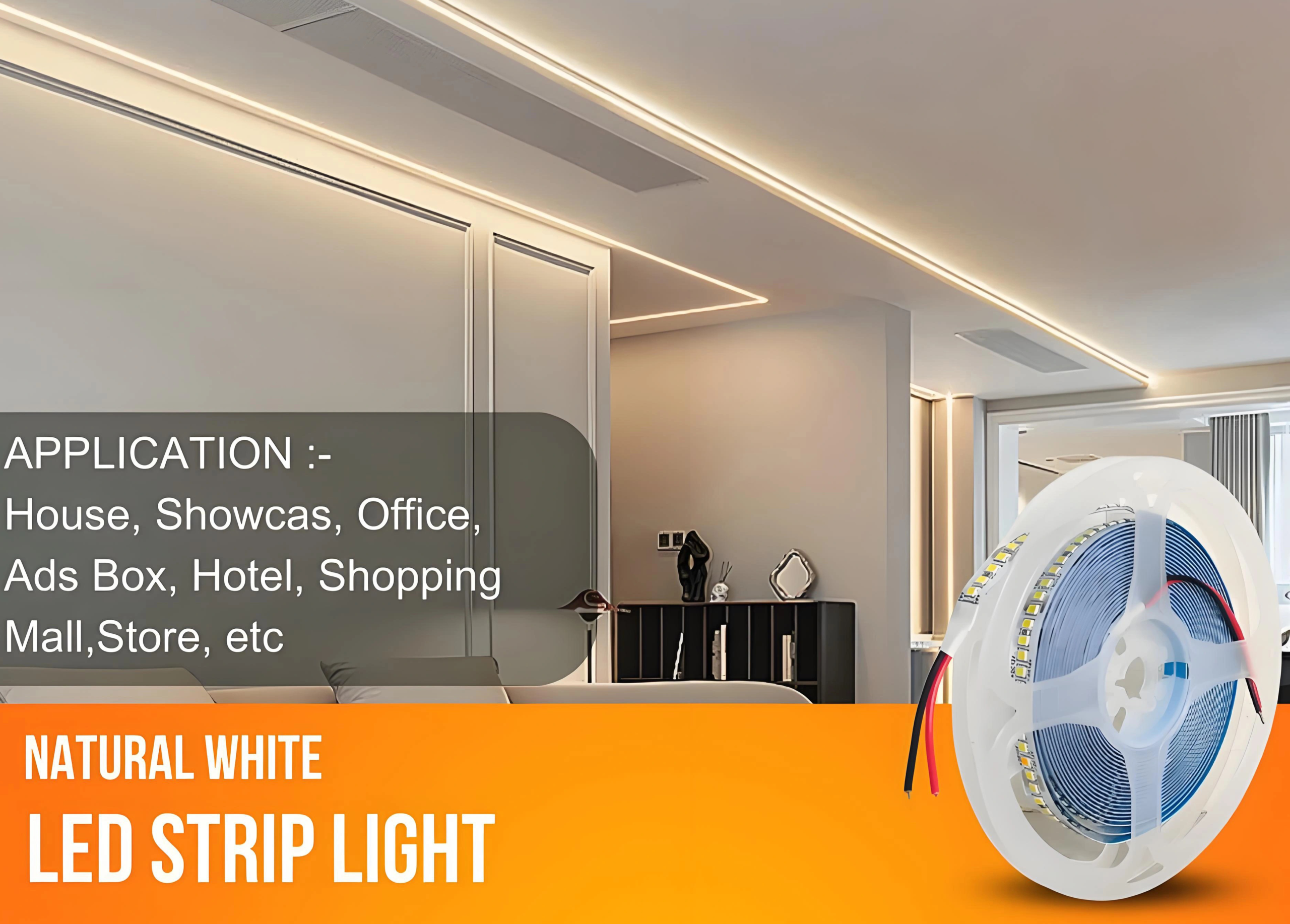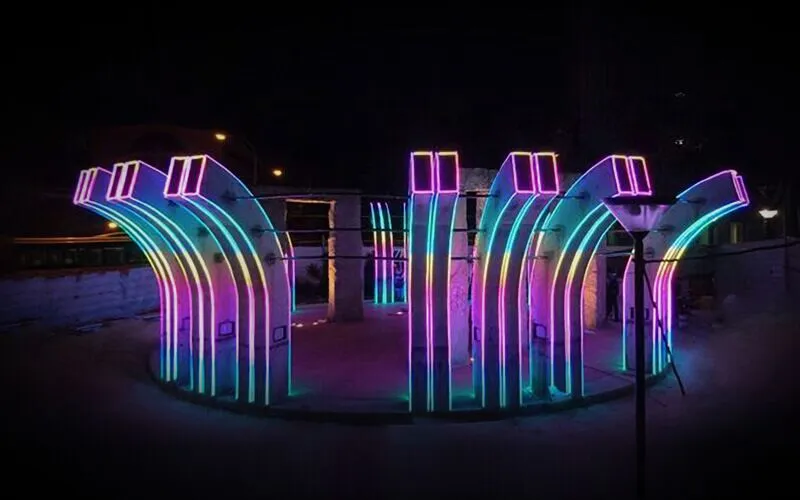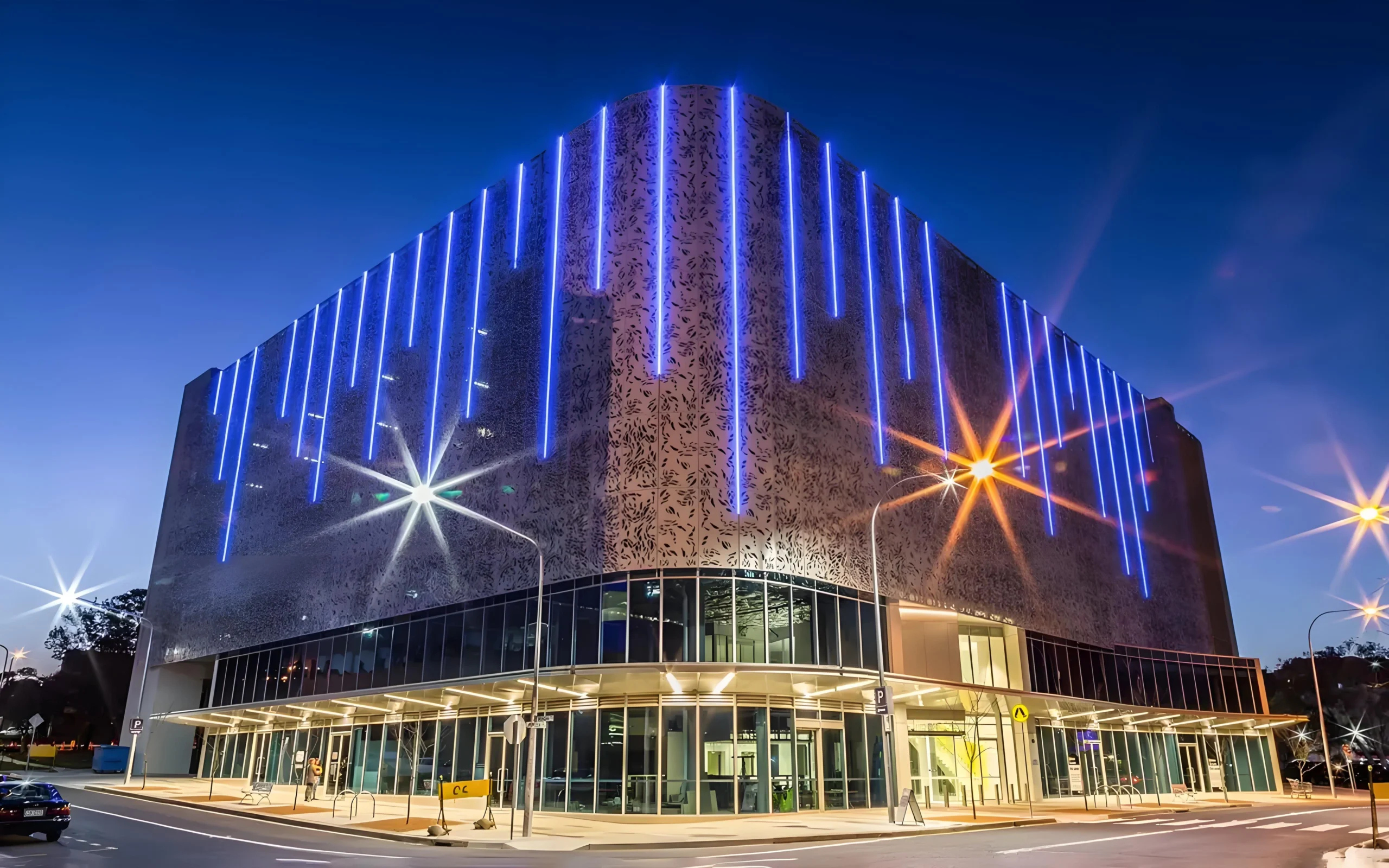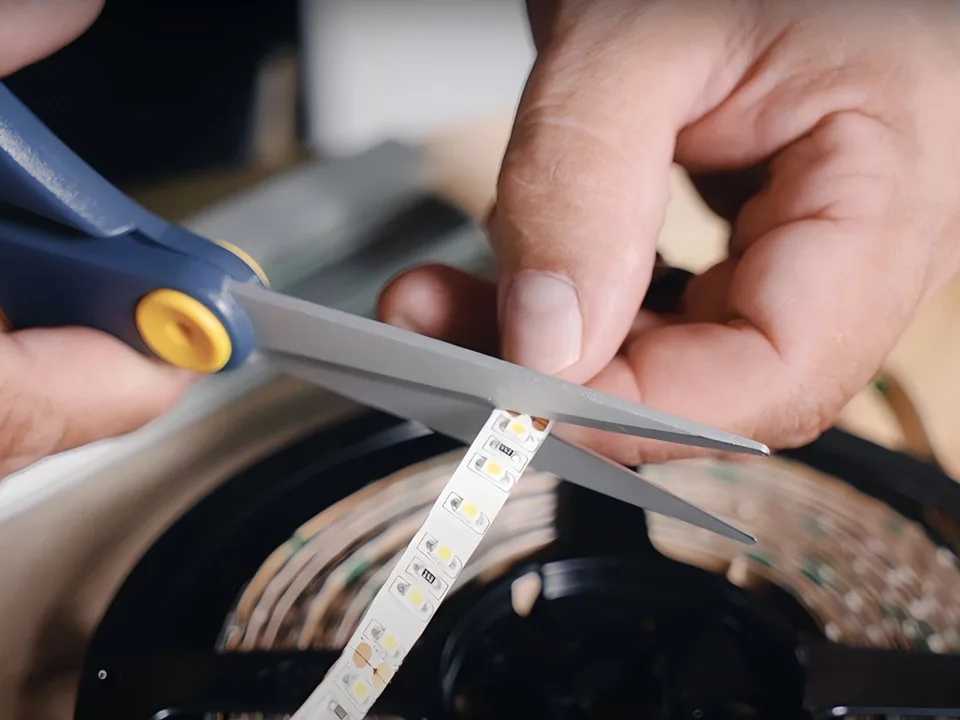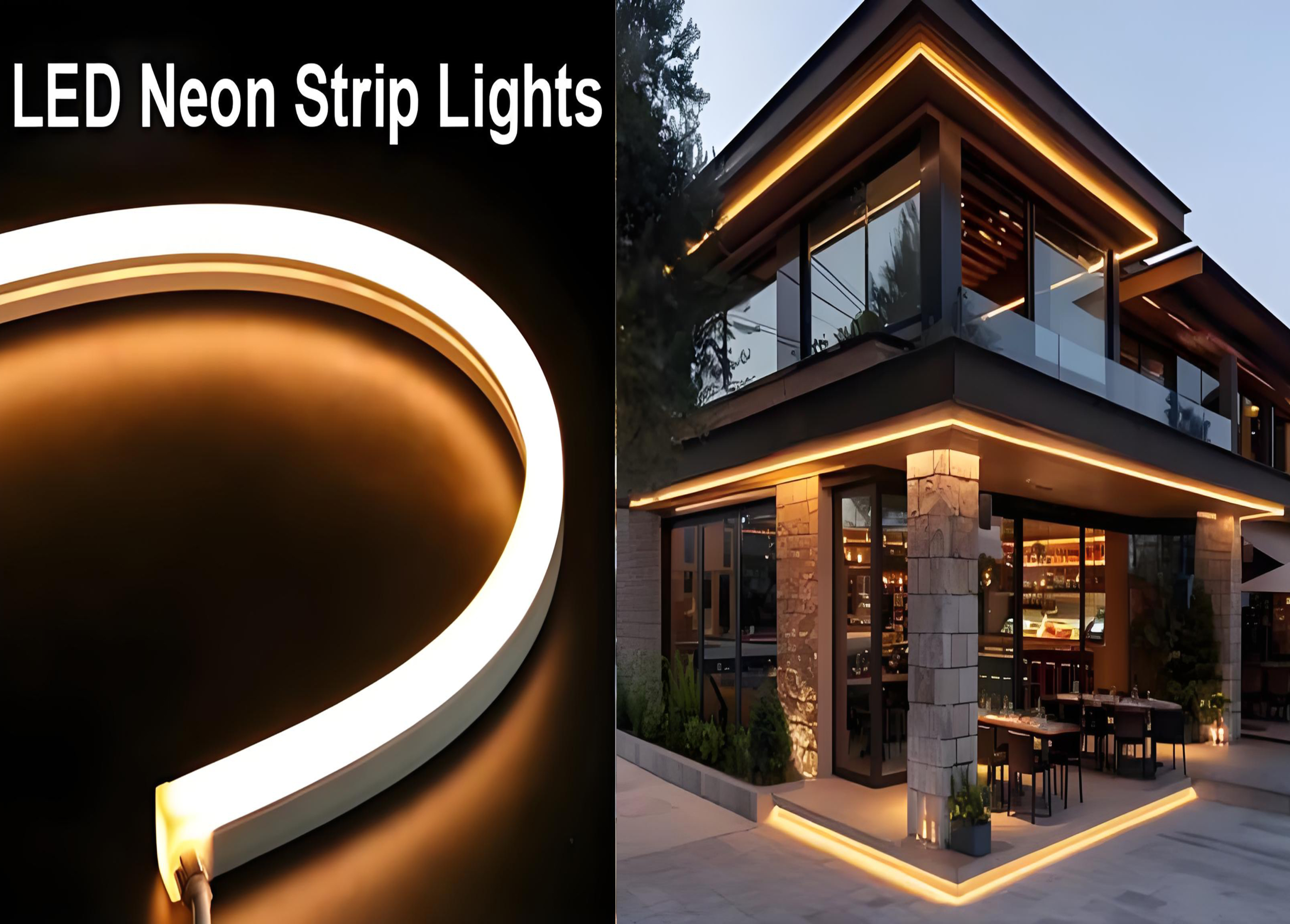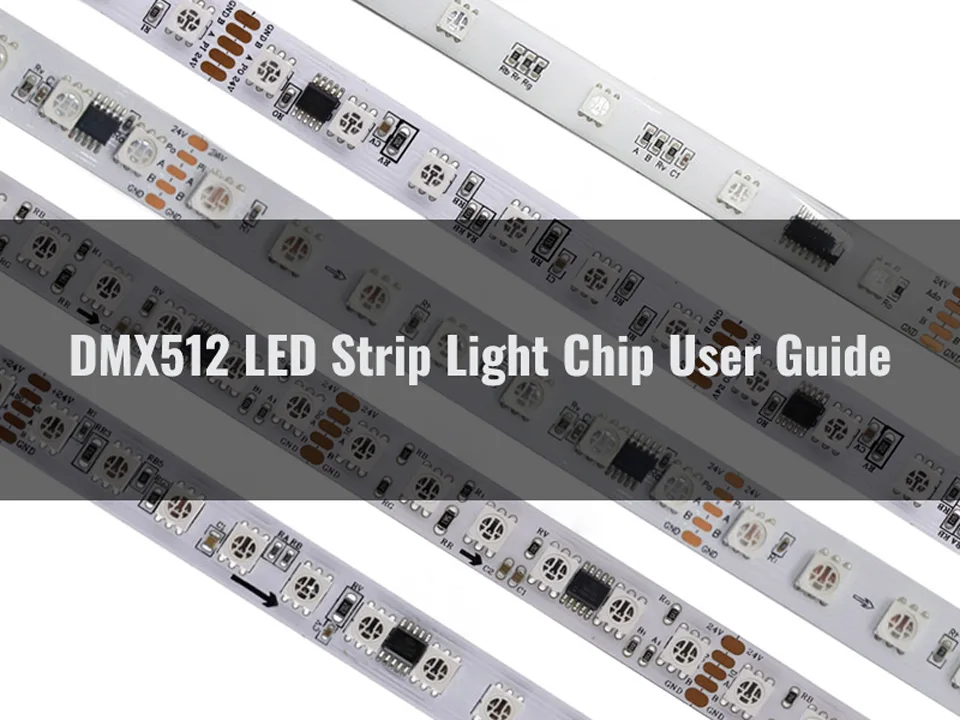SignliteLED is a manufacturer specializing in the production of LED strip lights, and our extensive experience in the industry has helped us understand the importance of LED selection and quality manufacturing. The LED is the core component of the LED strip, and the choice of a good LED is the key to ensuring the performance and service life of the LED strip product. We choose LEDs with the highest luminous flux (visible light) and the lowest forward voltage, as this ensures that we have LEDs with the best efficiency.
Next, I will take you through the knowledge of SMD LED and focus on how to choose the right LEDs. Because these are all factors that need to be fully considered in the production of LED strip lights. Only by choosing the right one will the product be more reliable and more durable.
What are LED?
LED stands for Light Emitting Diode. Its basic structure is an electroluminescent semiconductor material chip, made of semiconductor materials (such as GaN, GaAs, etc.), and emits light through electron migration after power. It is solidified on the bracket with silver glue or white glue, connected to the chip and circuit board with silver or gold wire, and then sealed around with epoxy resin to protect the internal core wire and play a role in earthquake resistance and moisture resistance.
The main types of LED include DIP LED (Dual In-line Package), SMD LED (Surface-Mounted Device), high-power LED, COB (Chip on Board), and Mini LED, which are respectively used in lighting, display, backlight, and other fields, with high efficiency and energy saving, small size, long life, and so on.
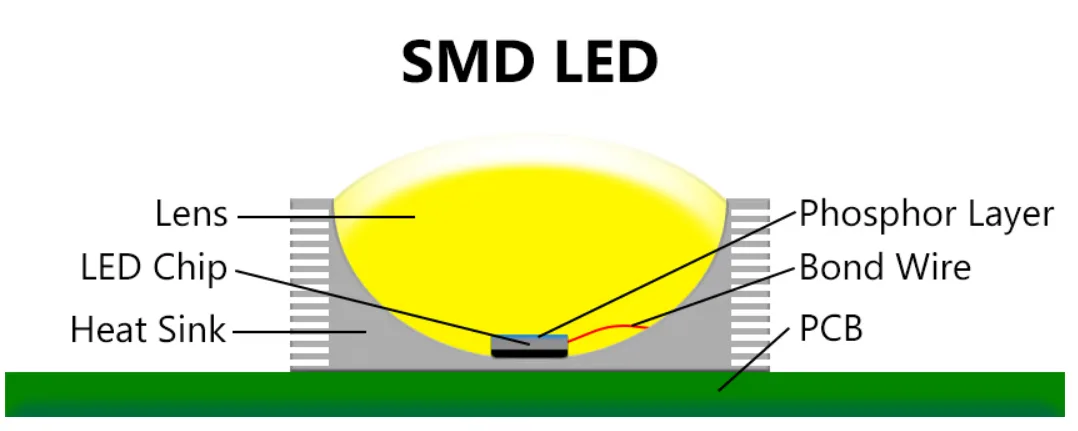
What are the specification parameters of the LED?
The specifications of the LED are like the “ID card,” recording its basic information. These parameters can be tested using the integrating sphere. As shown below:
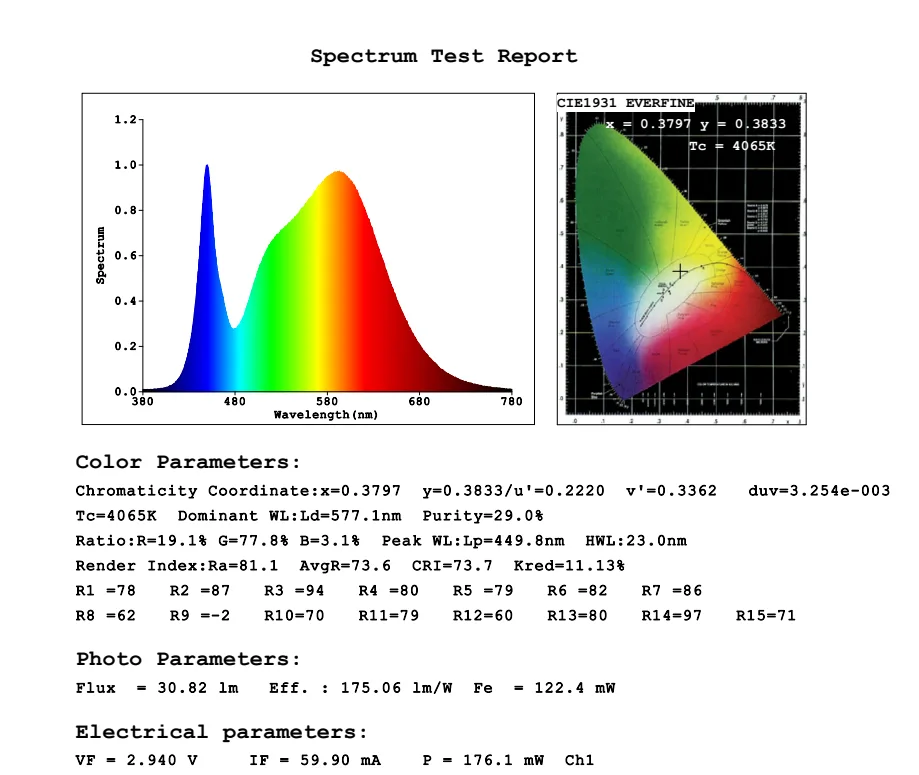
Size: This is effortless to understand; it is the size of the LED. For example, some LED may be like a small bean, while others may be slightly larger. This size is usually expressed in the form of “length x width” in millimeters (mm).
Power: Power determines the brightness and energy consumption of the LED. The energy consumption is large, the brighter the LED. But at the same time, the more power you may consume, the common power is 0.2W/0.5W/1W, etc.
Voltage and Current: These two are electrical parameters, which you can simply understand as how much “force” (voltage) and how much “flow” (current) the lamp needs to work properly.
Wavelength: This may be somewhat abstract, but you can consider it to be a “color code” for the light emitted by an LED, with different wavelengths corresponding to different colors.
Lumen: This is a measure of the brightness of the LED unit; the higher the lumen value, the brighter the LED. You can imagine that lumen is the LED “brightness index.”
Color Temperature: This describes the color temperature of the LED; you can consider the color temperature to be the “warm degree” or “cold degree” of the lamp bead, such as warm lights make people feel warm, and cold lights make people look refreshing.
Angle: Describes the angle of illumination of LED; the larger the angle, the wider the range of light.
Antistatic Capability: Static electricity may cause damage to the LEDs; the antistatic power of the LEDs can resist static interference and provide a longer service life.
SDCM: Color Tolerance refers to the consistency deviation of the color of the same batch of LED light source, which is reflected in the degree of deviation from the standard value on the color coordinate. The smaller the color tolerance, the higher the color uniformity of the LED, and the more unified the visual experience. SDCM is usually measured in McAdam’s ellipse; the smaller the value, the harder the color difference is to detect with the naked eye. For example, the lamp bead of warm white light color temperature usually requires SDCM ≤ 3, while the LED of cold white light requires SDCM ≤ 5.
What are the types of LED in the LED strip light?
LED strip lights with LED types are mainly according to the packaging form, size, and luminous characteristics classification, often using SMD (SMT) device types of LEDs, such as SMD2216/3014/2835/5050, and then there are COB (chip directly mounted). The following are common LED types and characteristics:
1. SMD2216: Size: 2.2mm × 1.6mm. Features: small size, occupy very little space. Applied to small-sized light belts, such as 5mm-wide light belts, because of its slim, flexible characteristics, it can be bent and cut and is suitable for complex shapes usually used for covert installation or space-limited scenes.
2. SMD2835: Size: 2.8mm × 3.5mm. Features: small size, high brightness, good heat dissipation, often used in high-lumen demand scenes (such as home main lighting or decorative lighting, such as background lights, lights, and so on). Power: single 0.2W-0.5W, light efficiency can reach 80-220 lm/W.
3. SMD5050: Size: 5.0mm × 5.0mm Features: large volume, can be integrated with multiple chips, often used in RGB color lights or high-brightness scenes. Power: Single 0.2W-0.5W (monochrome), RGB up to 0.6W-1.5W (tricolor chip).
4. COB (Chip-on-Board) Series: Features: no support structure, multiple LED chips are directly packaged on the substrate, uniform light without granular sense, suitable for scenes requiring soft lighting (such as cabinets, showcases). Advantages: High color rendering (CRI > 90), low glare, good heat dissipation. Light efficiency is about 80-120 lm/W.
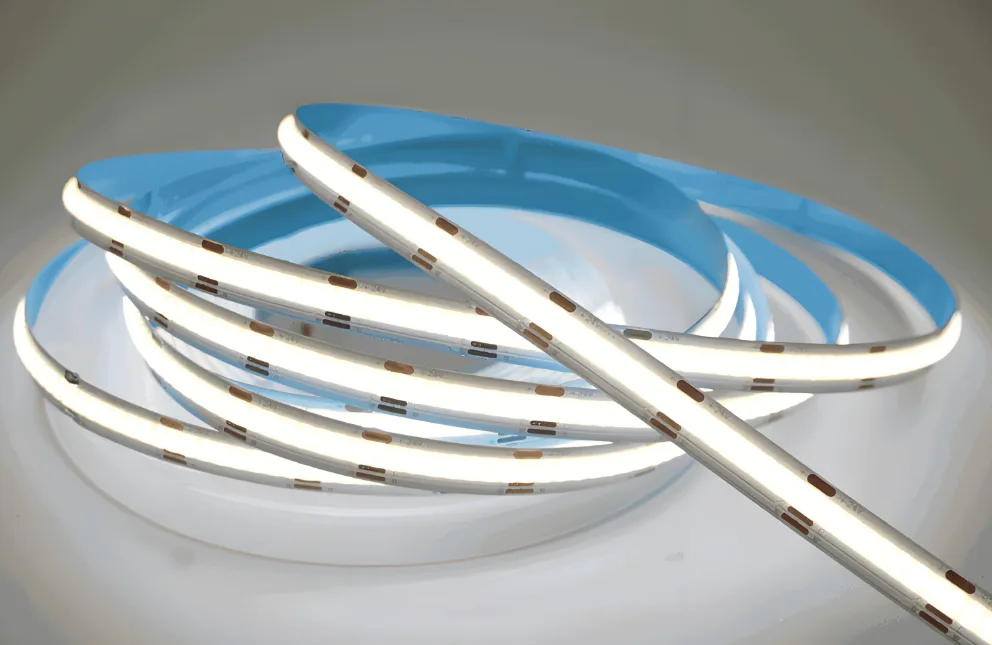
5. Other Special Types: RGB/RGBW LEDs, functions: Integrated red, green, blue (RGB), or plus white (RGBW) chip to achieve a full-color dynamic effect. Typical models: SMD5050 (RGB).
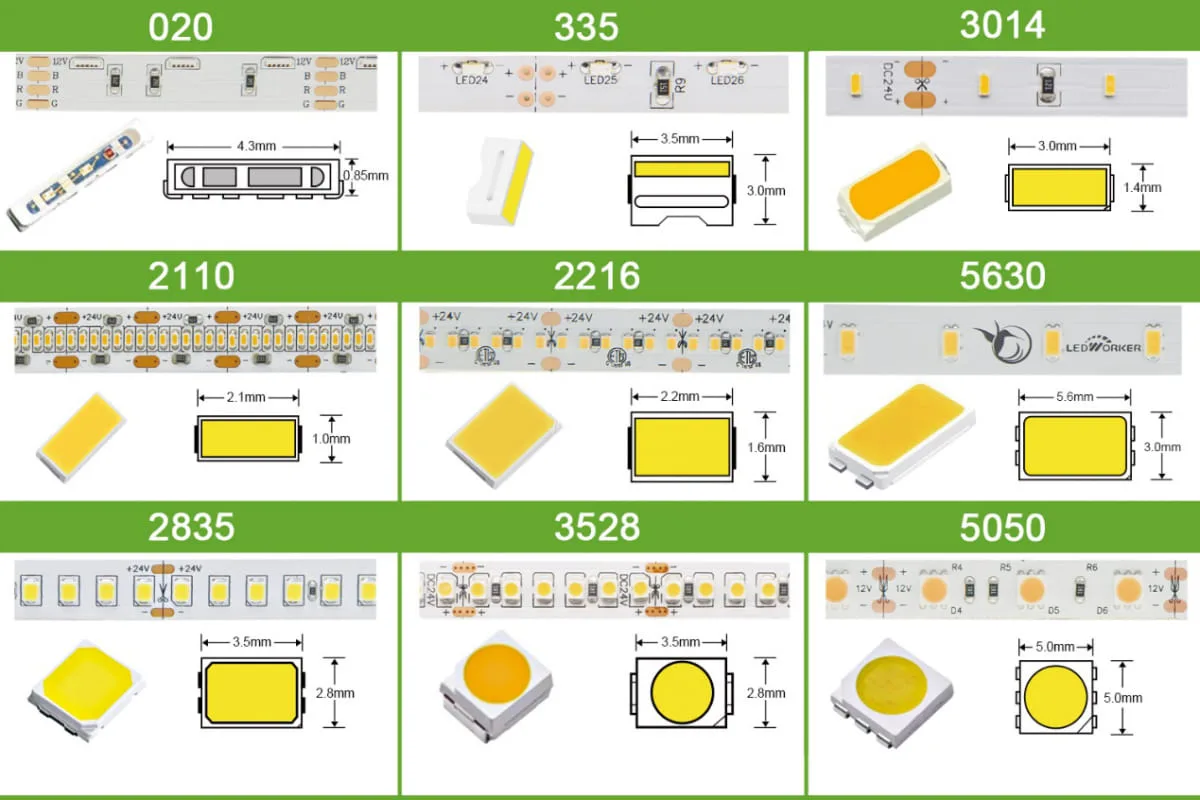
There are many types of LEDs, and each type is suitable for different scenes. The SMD2835 LED is widely used in various LED products because of its high brightness, high density, and easy installation characteristics; it is the most used LED.
Because of the low brightness, SMD3528 is only suitable for some occasions where the brightness requirements are not high. COB strip light consistency effect is better, and high color rendering is suitable for some high-end places. For some people who want to create a dynamic atmosphere of color, you can choose SMD5050RGB/RGBW digital dimming and color tuning.
What are the categories of the brackets of LED?
LED brackets are generally divided into iron brackets, aluminum brackets, and copper brackets. According to the electrical conductivity, the order is copper bracket > aluminum bracket > iron bracket. The better the thermal conductivity, the longer the life of the LED.
The LED packaging bracket is mainly composed of plastic, copper, and electroplating, of which the plastic material is crucial for thermal conductivity. PPA, PCT, and EMC are common plastic materials. The quality of the supporting material directly affects the quality of the LED; therefore, choosing the right supporting material is the key to ensuring the quality of the LED.
Material distinction
PPA: high-temperaturere nylon with long-term hhigh-temperatureresistance, low water absorption, good chemical resistance,, and other characteristics, often used in the production of LED reflectionbrackets. The main reasons for using PPA holders for lamp belts include their excellent physical, thermal, and electrical properties, as well as their stability in high-temperature and humidity environments. PPA (polyphthalamide) is a high-temperature-resistant thermoplastic.
PCT: polyterephthalate cyclohexane dimethyl ester (PPCT), another high-temperature, semi-crystalline thermoplastic polyester, whose properties are superior to PPA in some respects.
EMC: The EMC bracket is a highly integrated form of frame formed under the packaging of molding equipment using new epoxy materials and etching technology. EMC (Epoxy Molding Compound), as an LED bracket molding compound, is one of the three main materials (lead frame, gold wire, and molding compound) after the IC packaging process. The EMC bracket has the characteristics of high heat resistance, anti-UV, anti-yellowing, and good airtightness.
Compared with the traditional PPA and PCT brackets, the EMC bracket has been greatly improved and promoted in terms of optical reflectance, thermal expansion coefficient, material connection strength, and other aspects after high-temperature aging and is more suitable for high-quality and high-power LED device packaging.
PPA vs. PCT vs. EMC: three kinds of stent advantages and disadvantages
● The materials of the three scaffolds are different, and the structure and production process are also different, among which PPA is the injection molding process; PCT material fluidity is poor, injection molding is more troublesome, and an additional stamping process needs to be used; the EMC bracket is produced by the die top process.
● PPA and PCT are thermoplastic materials, and the main material of EMC is epoxy resin, which is a thermosetting material. The temperature resistance of EMC is higher than that of PPA and PCT, and the temperature resistance, yellowness, and air-tightness of PPA are not as good as those of EMC and PCT, but the price has advantages.
● Different heat dissipation, PPA, PCT, and EMC to enhance; due to different heat dissipation, the PPA bracket can only do 0.1–0.2W, PCT can only do 1W, and EMC can do 3W.
● EMC support has the advantages of high heat resistance, anti-yellowing, high current, high power, high density, anti-UV, small size, etc. It is currently optimistic about the packaging factory; many packaging companies have opened EMC production lines. However, some in the industry pointed out that the production process of the EMC framework and the PPA framework is completely unique. From the perspective of equipment and facilities, the industry prefers to use PCT. PCT materials are the preferred materials for LED packaging plants because of their excellent color stability and low water absorption.
PPA vs. PCT vs. EMC Bracket Comparison
| Texture | Merit | Drawback | Power |
| PPA | High temperature resistance, resistance high mechanical strength, good fluidity, low cost | Easy yellow, water absorption is relatively high | 0.06-0.5W |
| PCT | High temperature resistance, low water absorption, yellowing resistance, chemical resistance | Poor fluidity, molding is difficult, not resistant to hydrolysis | 0.1-1.5W |
| EMC | High temperature resistance, UV, yellowing resistance, high current good heat dissipation | High price, easy to crack | 1-2.5W |
Why choose PPA LED to use in flex LED strips?
Can all small-sized LED be used on a flex LED strip light? It is wrong to have this idea, and if you have this idea, you must change it as soon as possible. Flex LED strips must use PPA bracket LED beads. This is very important!
In the composition of the LED strip, the LED, as one of its core components, has a direct impact on the display effect and service life of the LED strip. Therefore, how to choose the LEDs of the LED strip light has become a topic worth discussing.
Here is how to buy LEDs.
Flexible LED strip lights must use PPA brackets; this bracket can be said to be a tailored LED strip. PCT and EMC brackets are not suitable.
1. PPA material is suitable for flex LED strips, mainly because of its excellent heat resistance; in a high-temperature environment, the LED bracket needs to withstand a certain amount of heat without deformation.
The attached table is our heat resistance test of PPA LED. As can be seen from the table, the heat resistance of PPA is better than that of PCT.
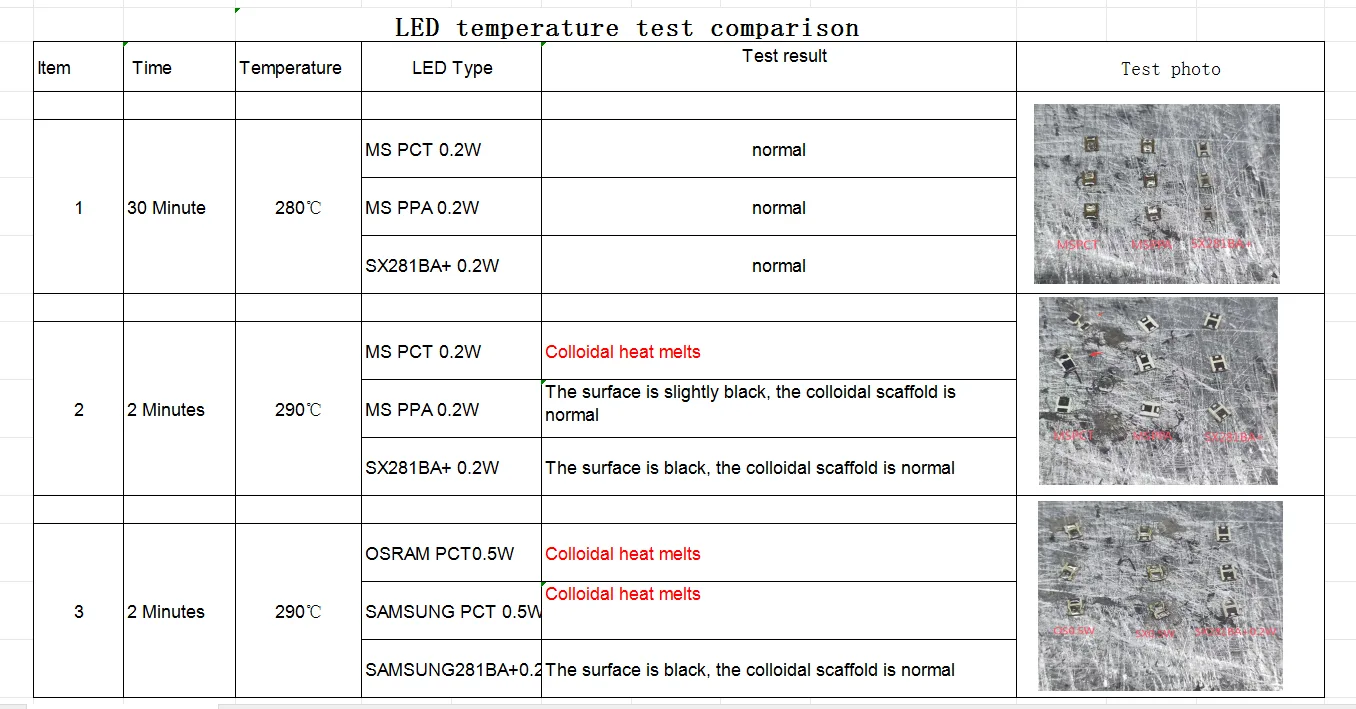
2. The high mechanical strength of PPA can provide sufficient support to ensure that LED components are not damaged by external forces during use. PPA materials are softer than PCT and EMC materials, while EMC and PCT materials are hard and brittle. PPA is better able to cope with unexpected pulling without breaking.
3. PPA materials are less hygroscopic than other materials and can be used for a long time under extreme conditions such as outdoor lighting.
In summary, the LED flex light strip selection of the PPA bracket is the most sensible choice.
LED commonly used brand selection
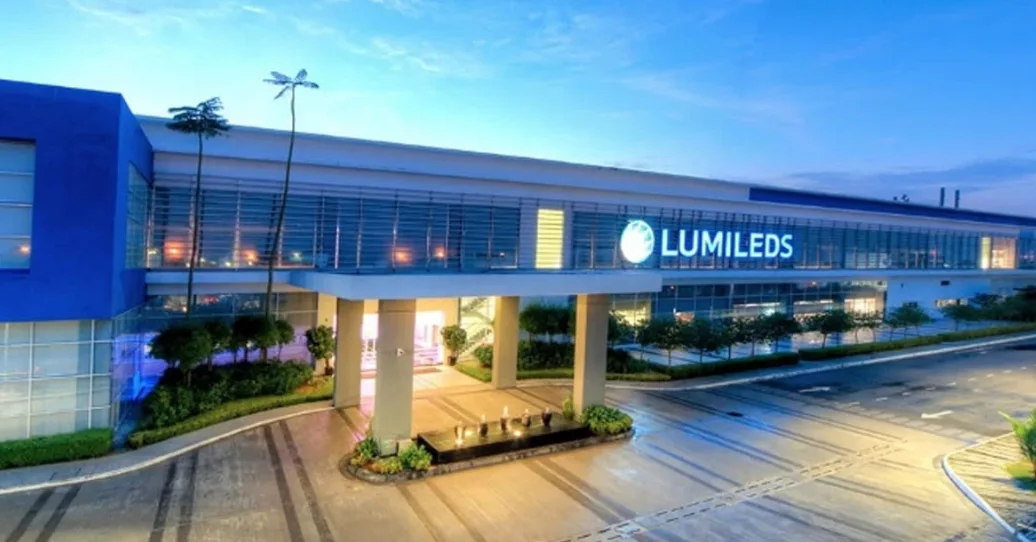
Choosing a well-known LED brand is the key to ensuring the quality and performance of the LED strip light. Internationally renowned brands such as Lumileds, Osram, Samsung, etc., occupy an important position in the global market with their profound technology accumulation and high-quality products. Chinese brands such as SANAN Optoelectronics, Taihong Optoelectronics, NationStar Optoelectronics, etc., also occupy a large share in the market.
Different brands and types of LED have a large price difference, and their lives are also from thousands of hours to tens of thousands of hours. Choosing high-quality LED, although the initial investment is larger, is more economical in the long run because they have a longer service life and lower maintenance costs.
FAQ
The full name of LED is semiconductor light-emitting diode, which is a light-emitting device that directly converts electrical energy into light energy by semiconductor materials and converts electrical signals into light signals. It has the advantages of low brightness, high brightness, gorgeous color, large vibration, long life (normal light emitting 80,000–100,000 hours), cold light source, etc., and is the real “green lighting.”
60-70°C is the most appropriate LED working temperature; generally controlled within 65°C is the ideal working temperature; of course, 70°C will not be high. However, the LED temperature is high, so the heat dissipation performance of the lamp is relatively poor, and it will not necessarily burn for a long time, but it will have a certain impact on the life of the LED.
If you want to keep the LED in a better brightness for a long time, it is best to let the LED temperature range be about 40-50°C; light decay is small, and the life of the LED will be longer.
Conclusion
Founded in 2011, SignliteLED has focused on the development and production of LED strip lights for 14 years and is committed to providing global customers with the best lighting solutions with high brightness, high reliability, energy saving, and environmental protection. Driven by core technology, we have an annual production capacity of more than 5 million meters, and our products are exported to more than 10 countries and regions, serving home, commercial, industrial, and outdoor landscape and other fields, and are the industry’s leading one-stop LED strip light supplier.
Whether you are looking for a standardized product or a customized solution, Signlite Opto-electronics Co., Ltd. will empower your project with a professional team and cutting-edge technology. If you have more questions or want more information about a certain product and whether it is right for you, we are here to help. Feel free to contact us for free samples and exclusive quotes.
